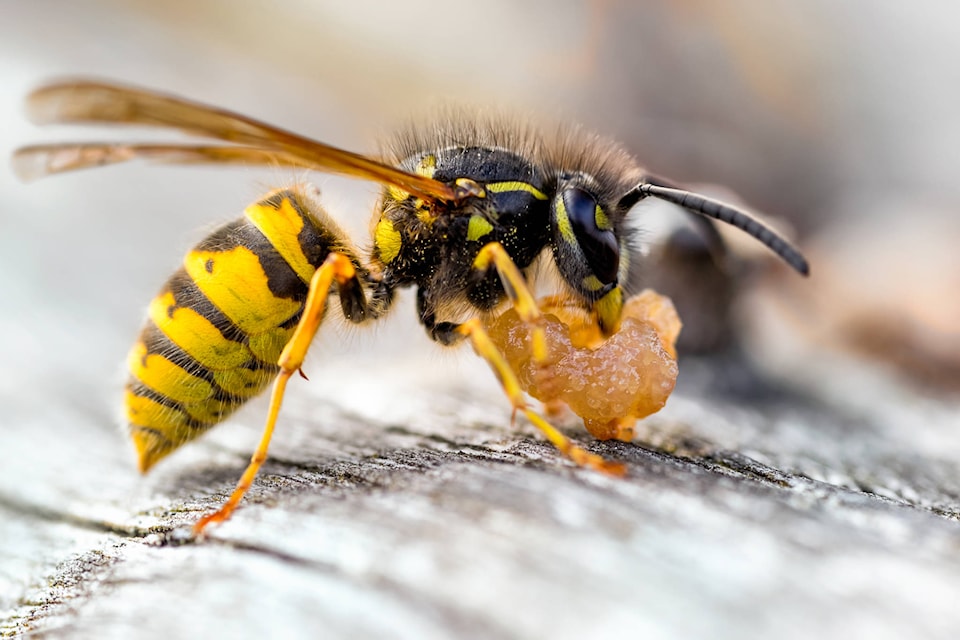Every year as the weather gets warmer and we begin to relax into the comfortable rhythm of summer we are joined by our favourite pests - the wasp.
There are a few wasp species that commonly join us on our picnics. One, in particular, is the yellowjacket. These flying insects with their bright yellow bodies and black stripes are typically mistaken for the honeybee, although there are a few key differences. Wasps typically have long slender wings while honeybees’ are more round; the wasp colouring is typically brighter than the honeybee (which is usually more orange than yellow); and the wasp creates small nests typically under tables or in your shed while the honeybee has a large colony and typically finds refuge in hollow trees.
While you may not be interested in getting too close to a stinging insect in order to evaluate their wing shape, there is a major behavioral/physiological difference that will help you identify a wasp quite quickly. Unlike our fellow honeybees, wasps are carnivorous. If you find a flying insect eating off your dinner plate, you are most likely in the presence of a wasp.
Wasps may seem like pests to us but they do play an important predatory role - they can help reduce the pest populations that take over our beautiful vegetable gardens or farm crops. Wasps consume all types of insects such as caterpillars, beetle larvae, flies, spiders, and yes, honeybees. In addition to being biocontrol, wasps actually play a small role in pollination!
As a beekeeper, if we see increased wasp activity in our gardens, it is time to check the front entrance of our hives. Yellowjacket attacks can completely destroy our colonies over a short period of time. If we see wasps at our front entrances, it is time to put on our entrance reducers. By reducing the front of our colonies, we give the honeybees a chance to defend the hive.
While we move into warmer weather, and you have reduced the front entrance due to wasp activity, you may want to keep in mind how the bees will ventilate their colonies. If you have a screened bottom board, I would suggest removing the board. The screen will increase airflow but prevent wasps from entering the hive.
If you are using a regular bottom board and wasp activity is exceptionally high, consider relocating the colony altogether. This may be a last resort, but relocating your colony could give them the advantage they need to survive.
Rachel Halliwell is a Bee Master Certified beekeeper in the Comox Valley. Her website is www.homegrownbee.ca
